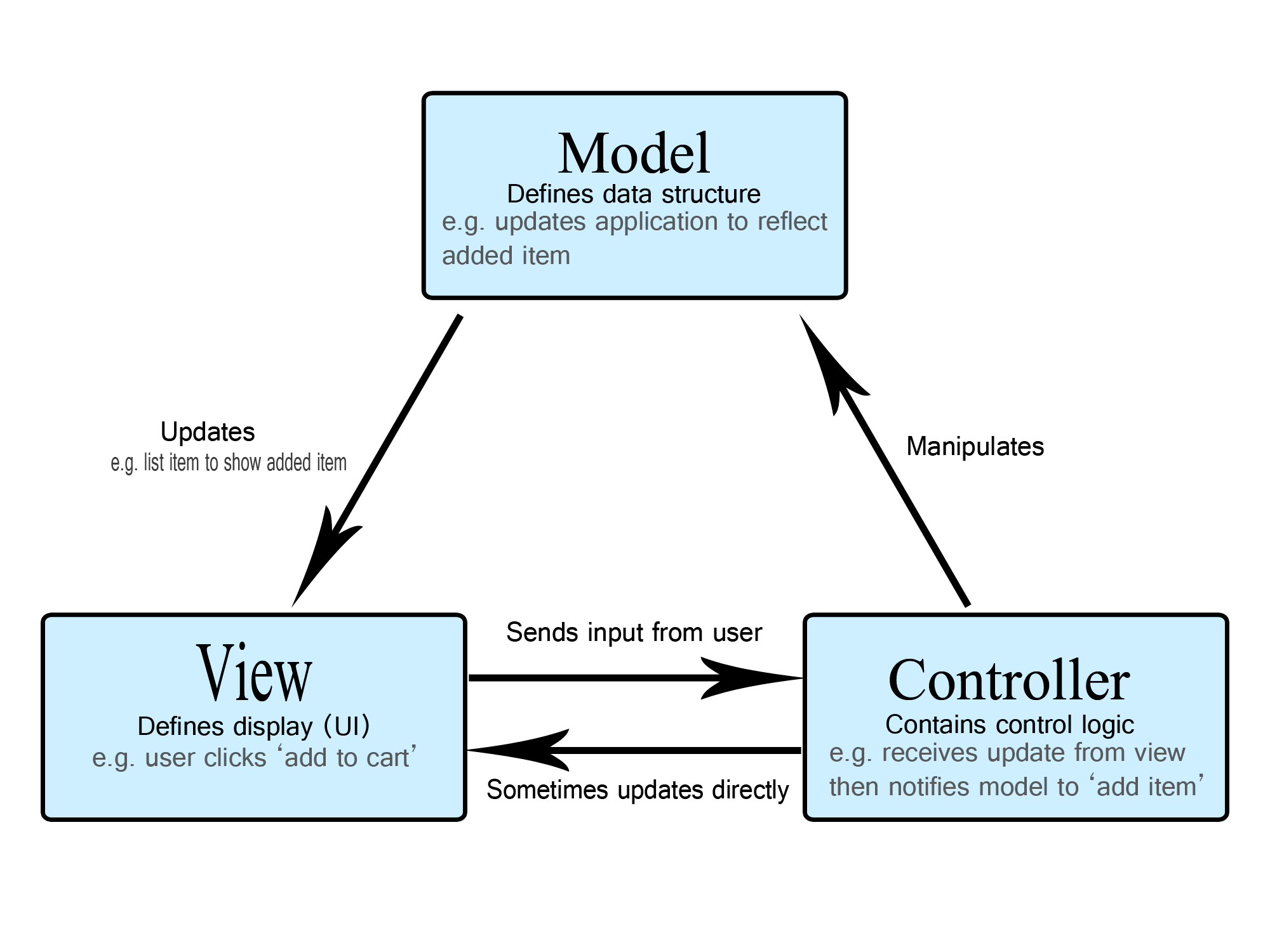What is MVC?
Table of contents
MVC (MODEL VIEW CONTROLLER) is a pattern in software design commonly used to implement user interfaces, data, and controlling logic. It emphasize a separation between the software's business logic display. The "separation of concerns" provide for a better division of labor and improved maintenance. Some other design patterns are based on MVC, such as such as MVVM (Model-View-View-model), MVP (Model-View-Presenter), and MVW (Model-View-Whatever).
The three parts of the MVC software-design pattern can be described as follows:
Model: Manages data and business logic.
View: Handles layout and display.
Controller: Routes commands to the model and view parts.
Model View Controller
Imagine a simple shopping list app. All we want is a list of the name, quantity and price of each item we need to buy this week. Below we'll describe how we could implement some of this functionality using MVC.

The Model
The model defines what data the app should contain. If the state of this data changes, then the model will usually notify the view (so the display can change as needed) and sometimes the controller (if different logic is needed to control the updated view).
Going back to our shopping list app, the model would specify what data the list items should contain — item, price, etc. — and what list items are already present.
The View
The view defines how the app's data should be displayed.
In our shopping list app, the view would define how the list is presented to the user, and receive the data to display from the model.
The Controller
The controller contains logic that updates the model and/or view in response to input from the users of the app.
So for example, our shopping list could have input forms and buttons that allow us to add or delete items. These actions require the model to be updated, so the input is sent to the controller, which then manipulates the model as appropriate, which then sends updated data to the view.
You might however also want to just update the view to display the data in a different format, e.g., change the item order to alphabetical, or lowest to highest price. In this case the controller could handle this directly without needing to update the model.
